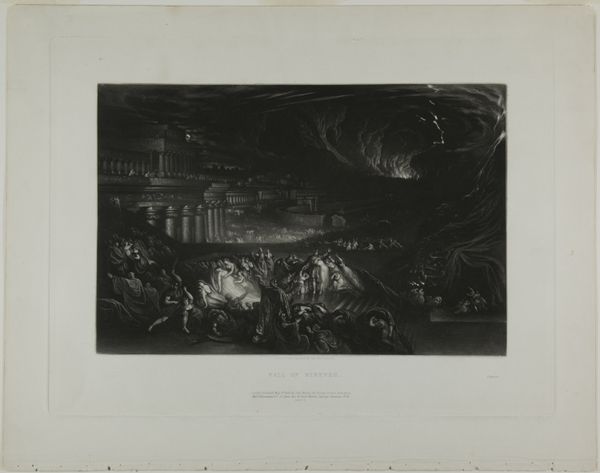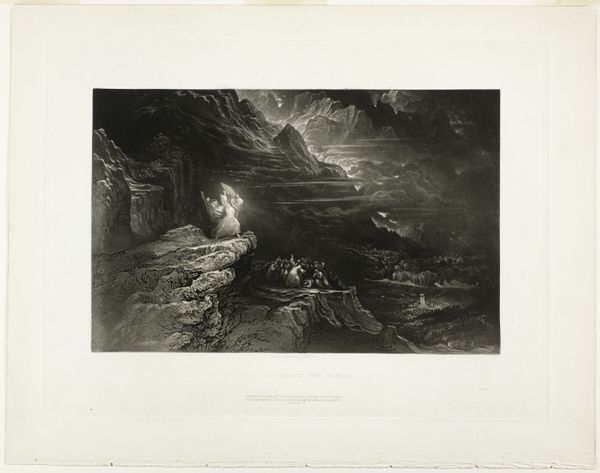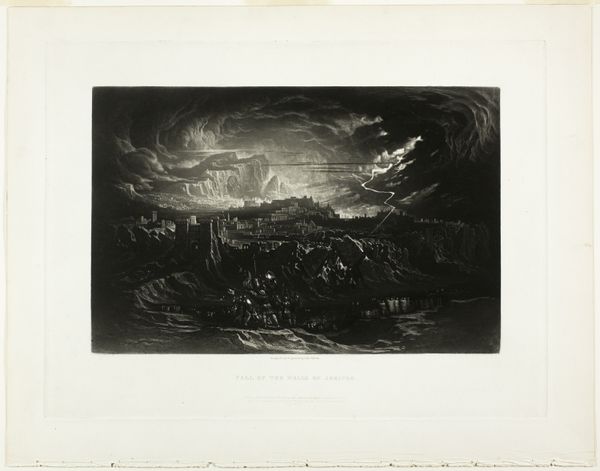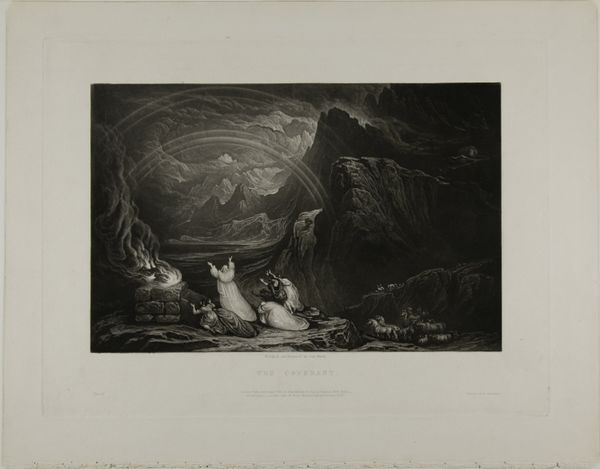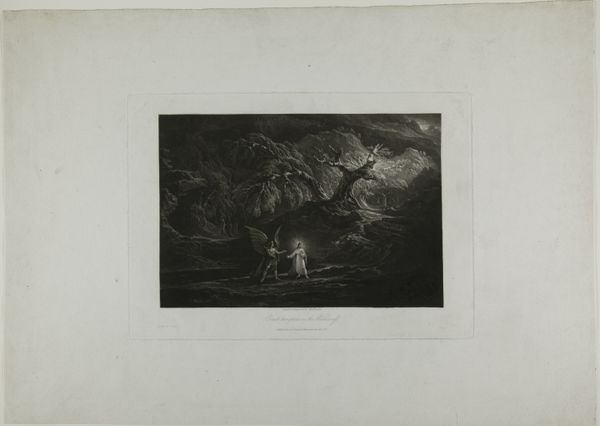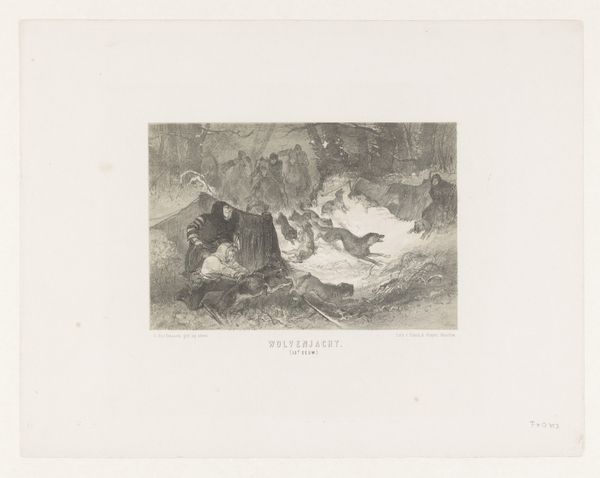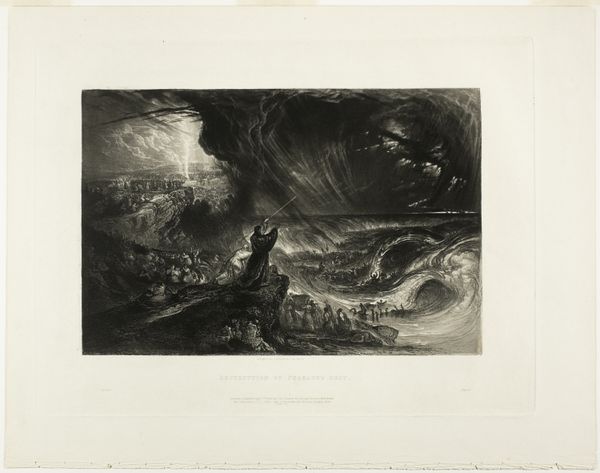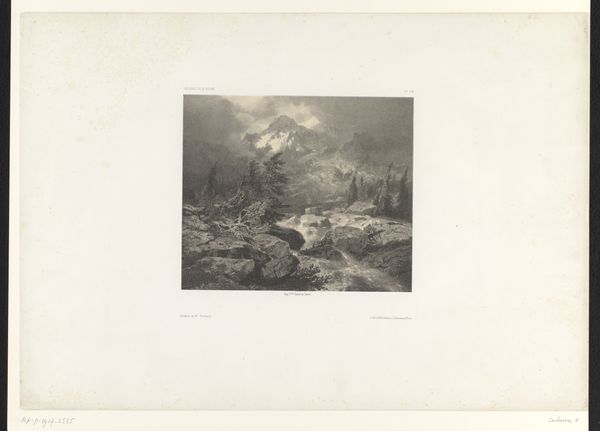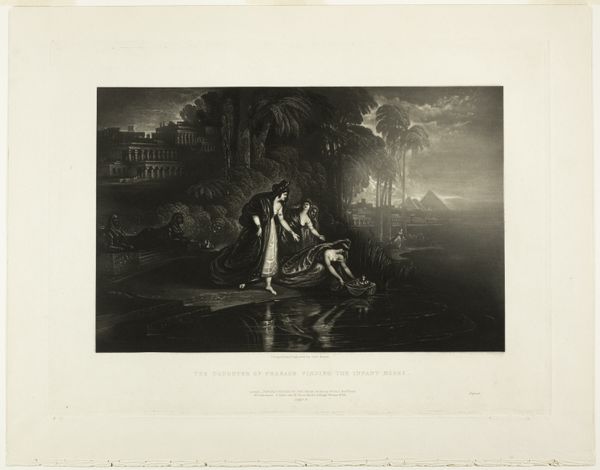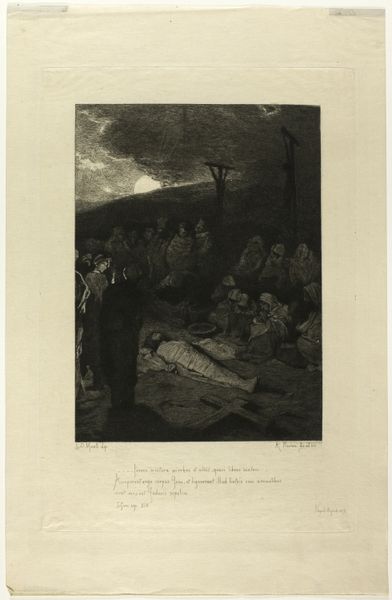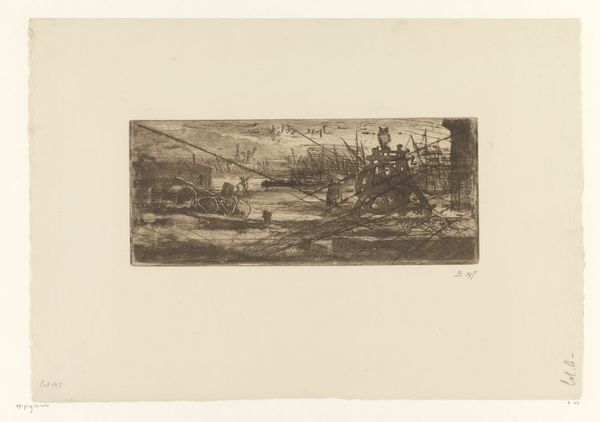
drawing, print, paper, charcoal, engraving
#
drawing
# print
#
landscape
#
charcoal drawing
#
paper
#
romanticism
#
charcoal
#
history-painting
#
charcoal
#
engraving
Dimensions: 190 × 290 mm (image); 268 × 357 mm (plate); 329 × 416 mm (sheet)
Copyright: Public Domain
Curator: This print is entitled “The Fall of Babylon,” and it comes from John Martin’s series of “Illustrations of the Bible” from 1835. It's a charcoal drawing and engraving on paper, currently residing here at the Art Institute of Chicago. Editor: Wow, there’s such a powerful, overwhelming sense of dread here. The figures in the foreground seem lost and grief-stricken while this immense city burns in the background. It evokes themes of colonialism and the human cost of progress. Curator: Indeed. Martin was a master of the dramatic and the sublime. In this piece, he translates a biblical narrative into a spectacle of ruin, very much aligned with the Romantic period’s fascination with grand historical events and the power of nature. This was made during the peak of the British Empire. It suggests questions of the impermanence of empires. Editor: And the choice of charcoal emphasizes the somber tone. It almost feels apocalyptic, that intense contrast between light and shadow, mirroring the collapse of civilization and moral order. I read a potent allegory about systemic injustice and the consequences of unchecked power. Curator: Consider the cultural context in which this image circulated: Religious fervor was intertwined with ideas about social justice. Martin wasn't just illustrating a biblical story; he was offering a commentary on the social issues of his time and a stark warning. The scale alone implies authority and an admonition to any nation at risk of decline. Editor: This visual language connects strongly with contemporary discussions about ecological disaster, inequality, and political upheaval. The vulnerable people represented stand out more than the architecture. What will happen to them after the “fall?” How do systems of power create, ignore, and even exacerbate human suffering? Curator: Precisely. Martin capitalizes on the popular fascination with historical and biblical narratives, which had huge markets in England, Europe, and America. Images such as these, circulated as prints, helped to frame discussions of history, religion, and empire-building in popular imagination. Editor: It speaks to the cyclical nature of history and the persistent struggle for justice, asking us to reflect on our own societies. The burning city could be any number of places today, still consumed by corruption and violence. Curator: Viewing this work through a modern lens helps us engage with its continuing resonance in the face of ever-shifting cultural landscapes. Editor: Yes, reflecting on the impact and what such powerful imagery inspires within each of us, individually and collectively.
Comments
No comments
Be the first to comment and join the conversation on the ultimate creative platform.
